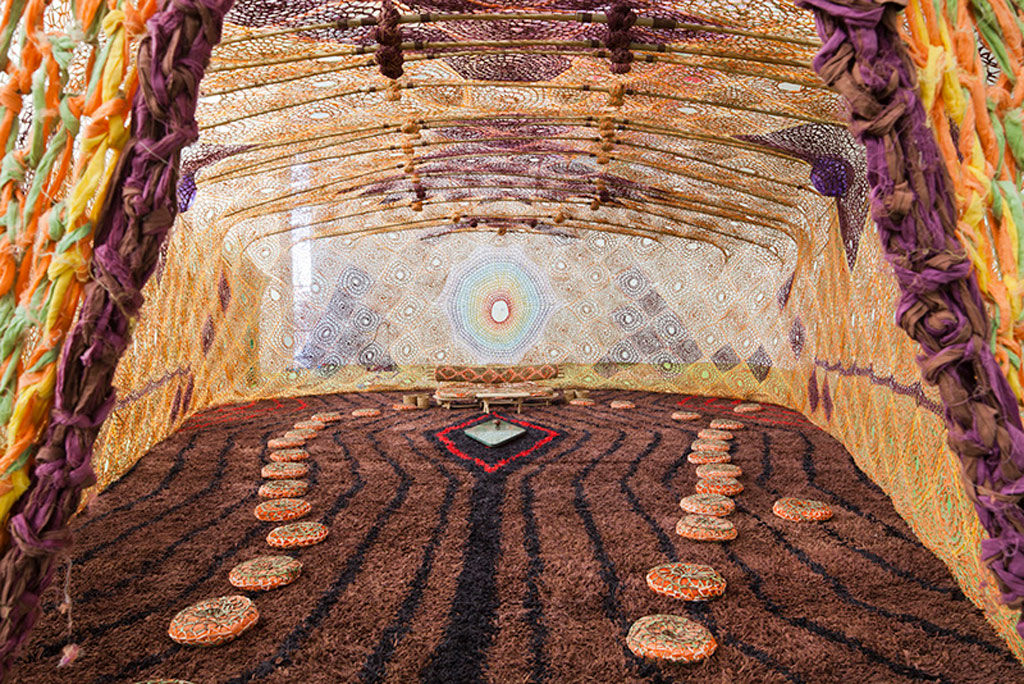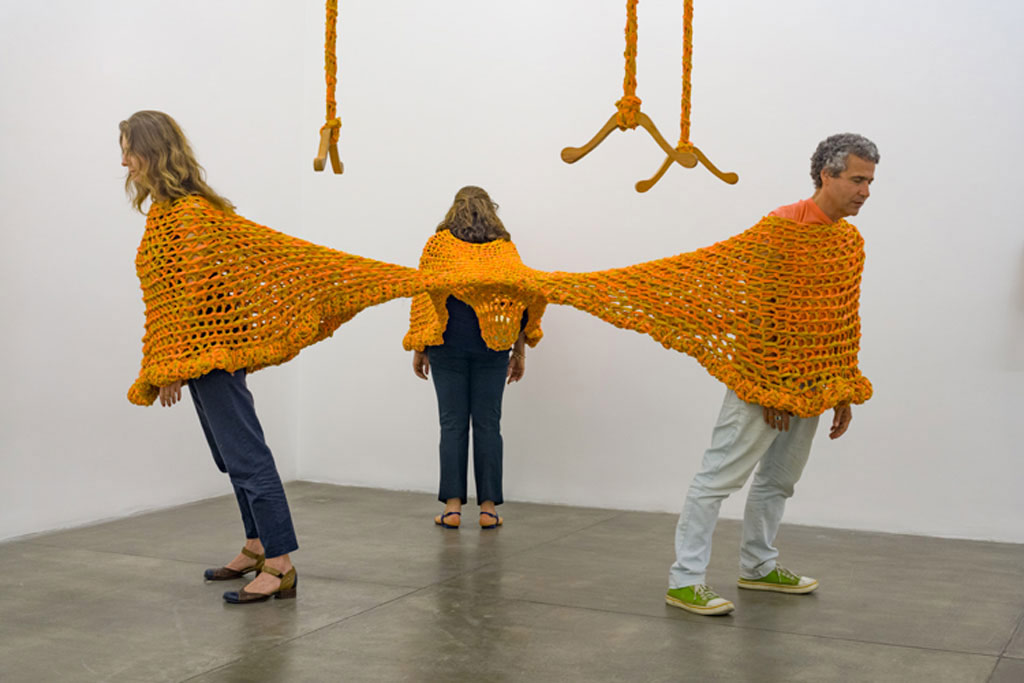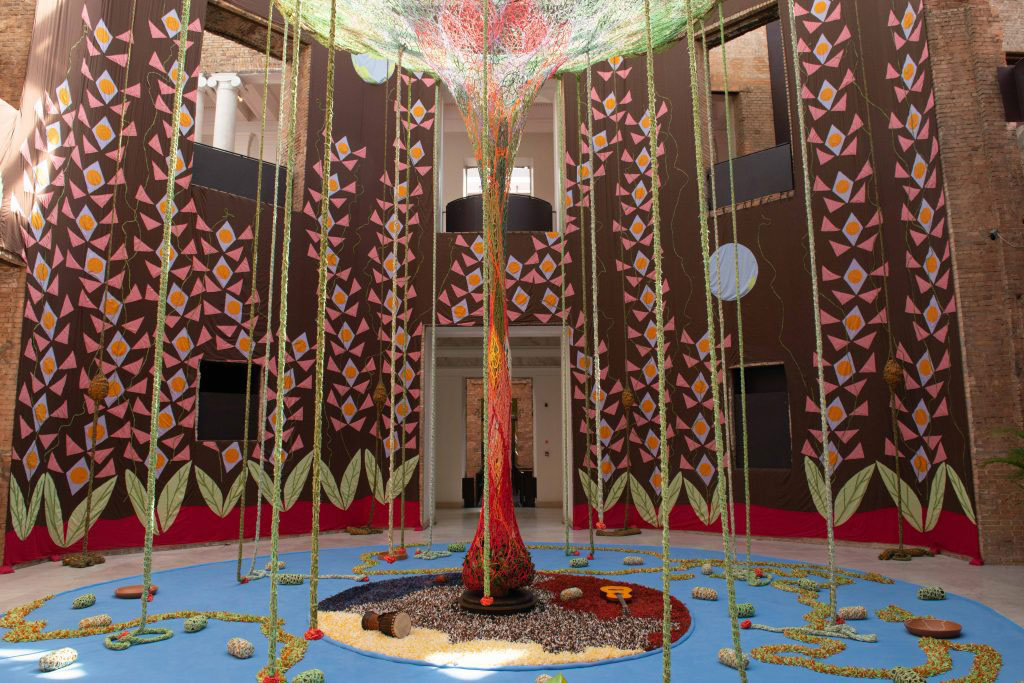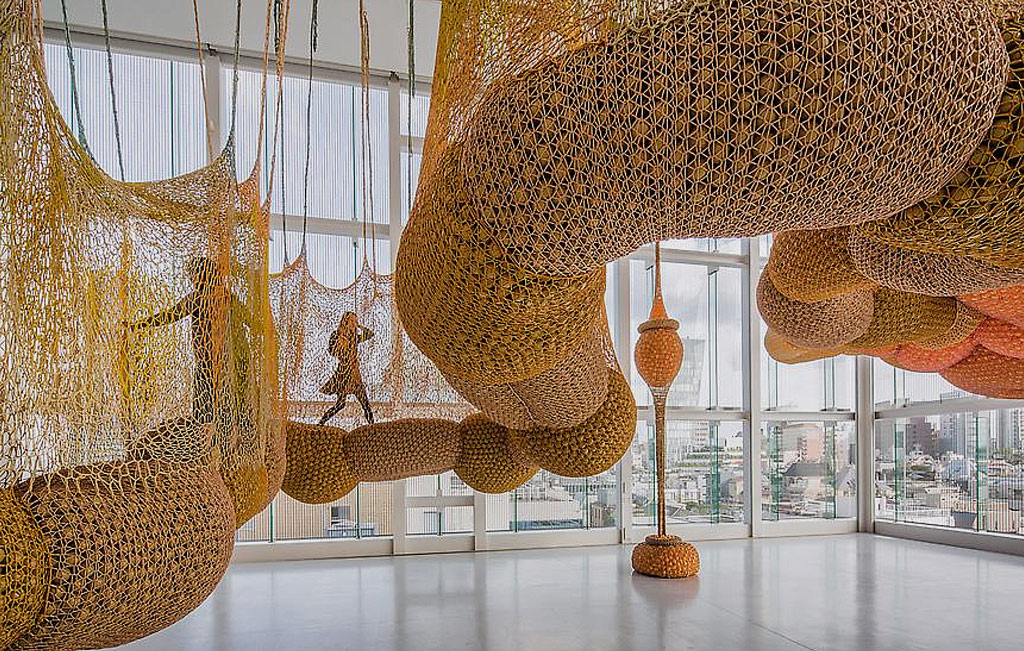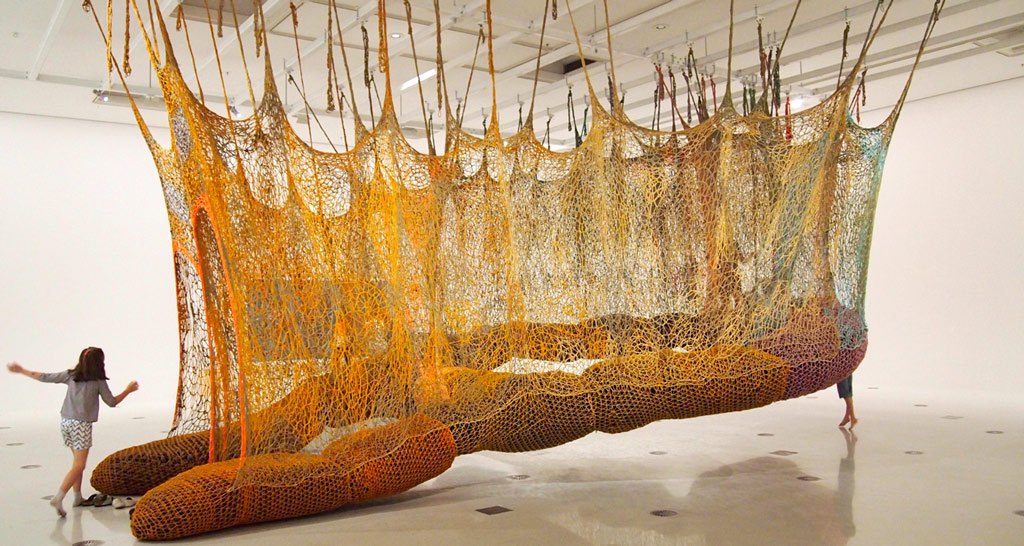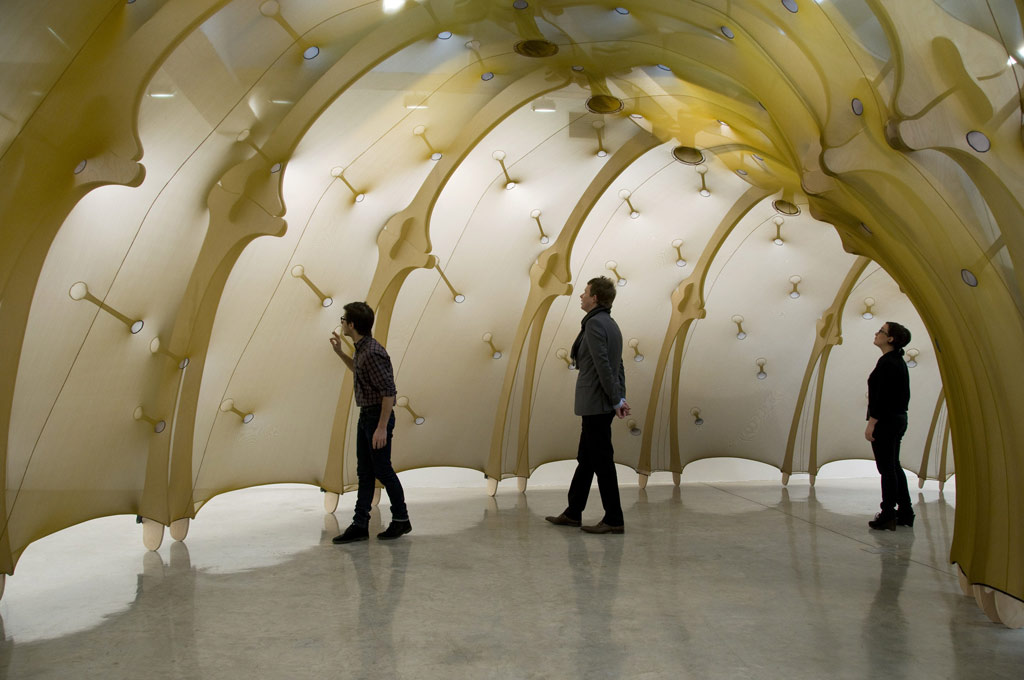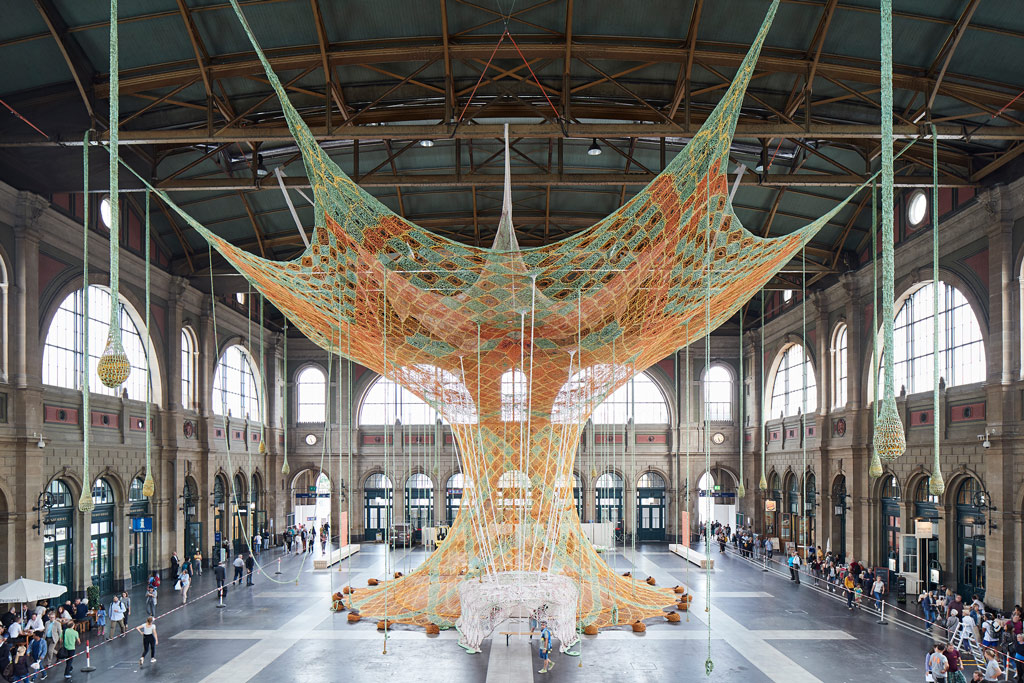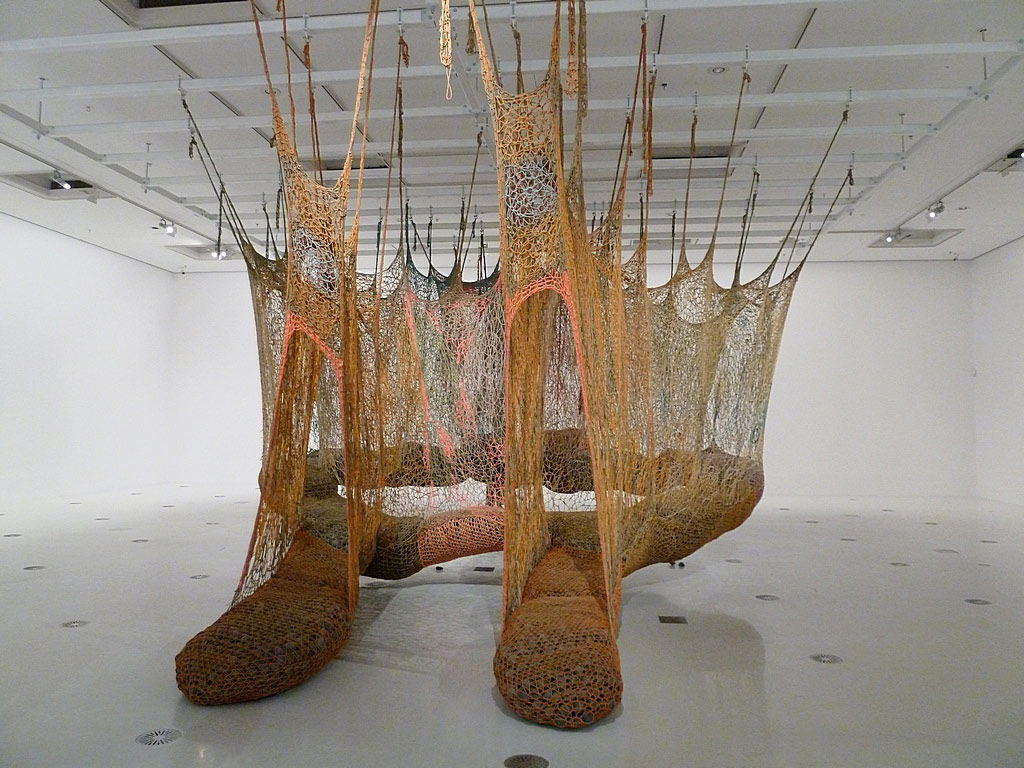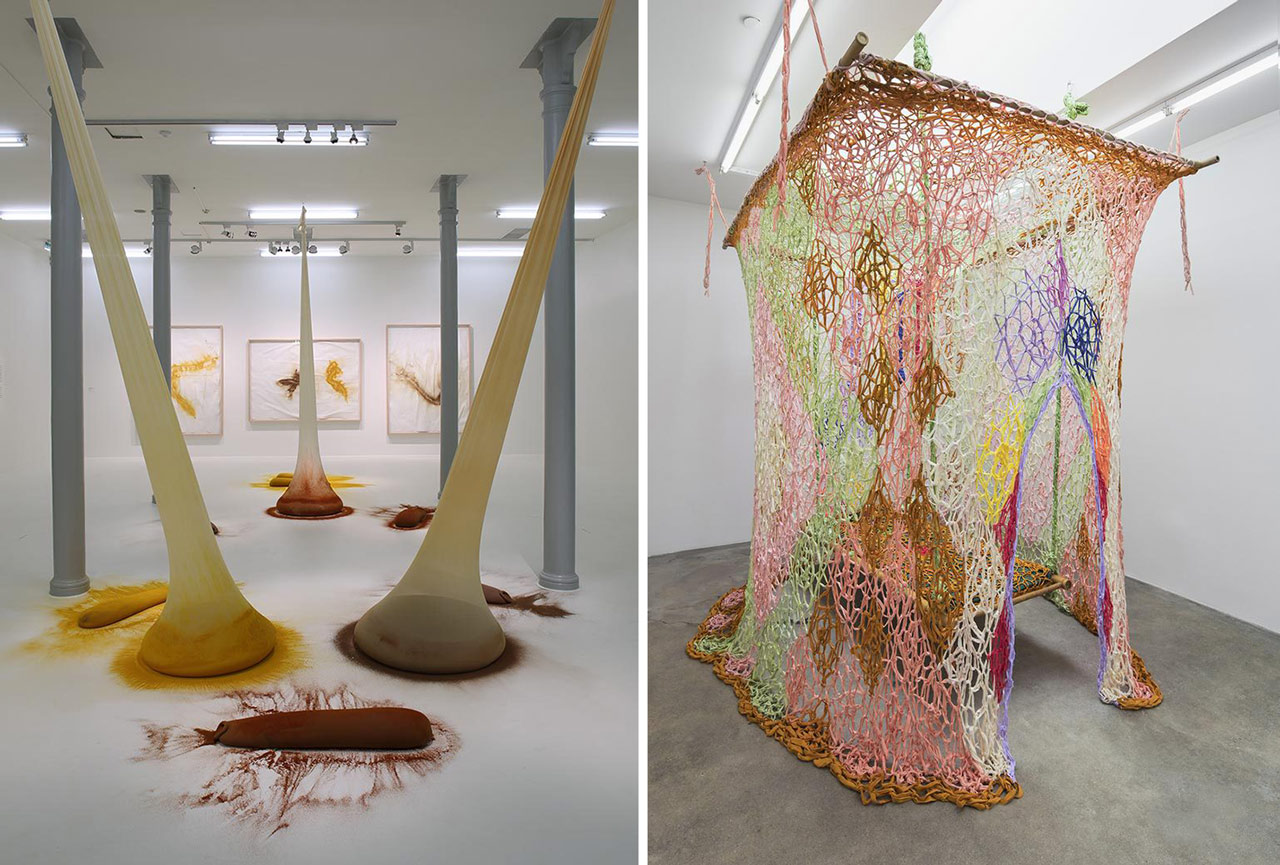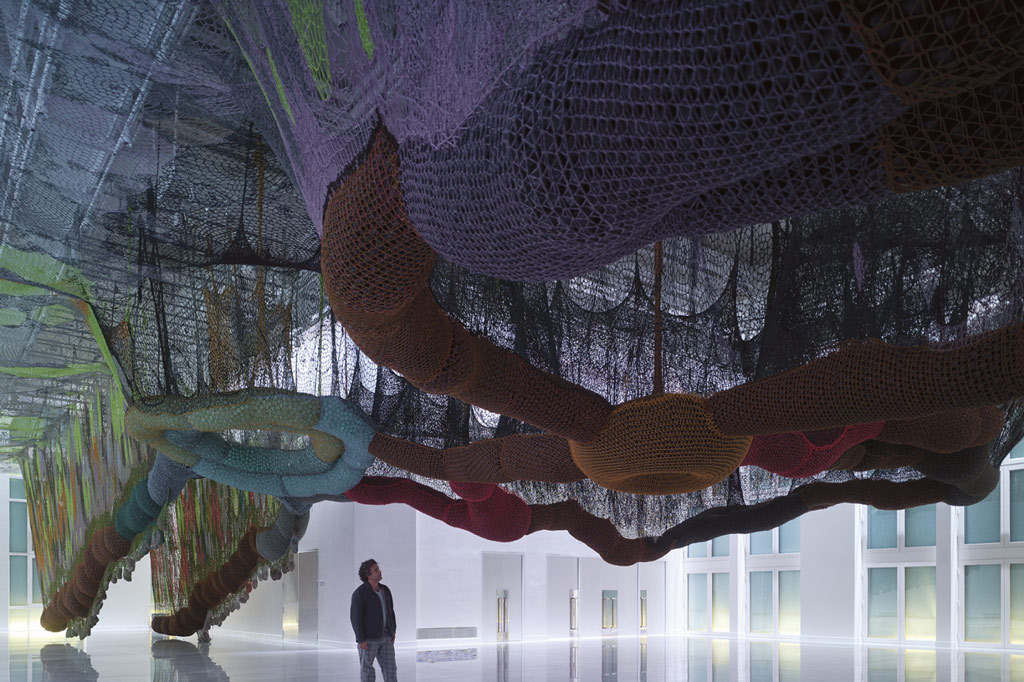ART-TRIBUTE:Weaving and other Practices… Ernesto Neto
 We continue our tribute with Ernesto Neto (1964- ). Since the mid-1990s, the artist has produced an influential body of work that explores constructions of social space and the natural world by inviting physical interaction and sensory experience. Drawing from Biomorphism and minimalist sculpture, along with Neo-concretism and other Brazilian vanguard movements of the 1960s & 70s, the artist both references and incorporates organic shapes and materials that engage all five senses, producing a new type of sensory perception that renegotiates boundaries between artwork and viewer, the organic and manmade, the natural, spiritual and social worlds.
We continue our tribute with Ernesto Neto (1964- ). Since the mid-1990s, the artist has produced an influential body of work that explores constructions of social space and the natural world by inviting physical interaction and sensory experience. Drawing from Biomorphism and minimalist sculpture, along with Neo-concretism and other Brazilian vanguard movements of the 1960s & 70s, the artist both references and incorporates organic shapes and materials that engage all five senses, producing a new type of sensory perception that renegotiates boundaries between artwork and viewer, the organic and manmade, the natural, spiritual and social worlds.
By Efi Michalarou
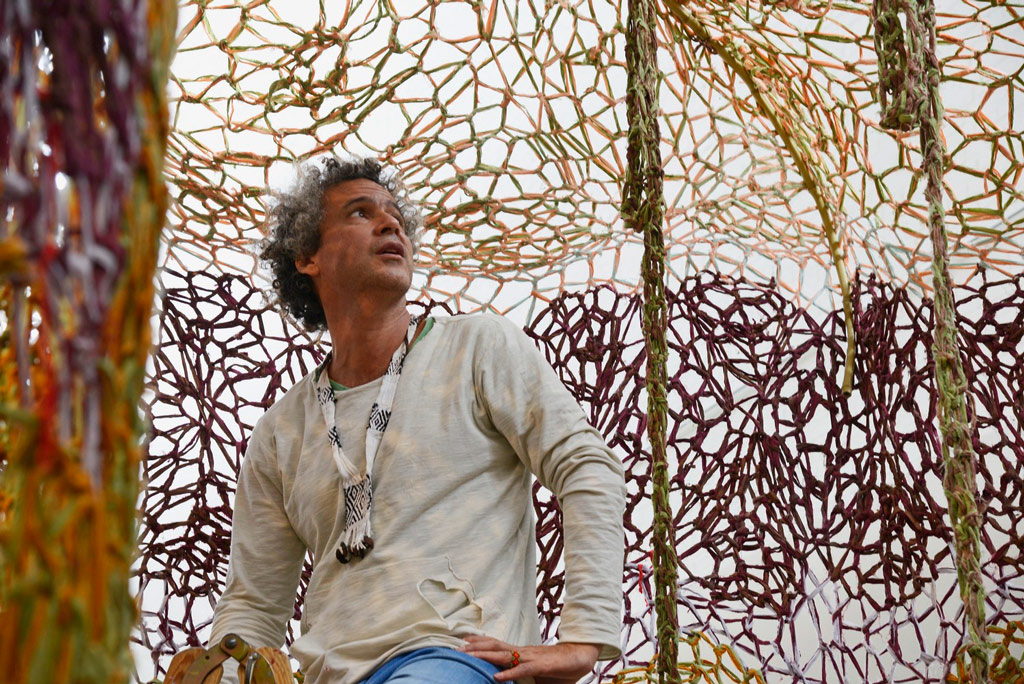 Born in Rio de Janeiro, Ernesto Neto came from a catholic family, he had first Solo exhibition was in the year 1988, with his “Colônias” for the first time which was sculptures that had been made out of polmymide stockings, which had then been filled with lead spheres. In the year 1990 Neto was given the award of “Prêmio Brasília de Artes Plásticas” .Which is an important art award in Brazil; later on two years later in 1992 Ernesto Neto exhibited at the São Paulo Museum of Modern Art. Between the years 1994-1997 Ernesto Neto completed his studies at both the School of Visual Arts in Parque Lage and at the São Paulo Museum of Modern Art, where he had previously exhibited his artwork for. In 1995 Ernesto Neto had his first exhibition that was outside of Brazil in South Korea, when he took part in the Gwangju Biennale. 1996 was the year Neto begun to develop his signature style further, by putting vibrant and fragrant spices inside translucent materials. His style was also developed further in 1997, when he created ‘Naves’, which was created with transparent fabrics that was flexible and could be interacted with. Inspired by the Brazilian Conceptualists Lygia Clark and Hélio Oiticica, as well as Minimalism and Arte Povera, Neto brings a delicate and meditative sensuality to his sculptural landscapes, claiming the human body as an artistic site by encouraging participatory engagement. In 1997, Neto made his first “nave” filling a cavernous space with hanging sheets of translucent fabric, the interior of which visitors were encouraged to walk through and touch. The use of nylon as a sculptural medium has remained a constant in his work, with subsequent installations growing large enough to accommodate tunnels, discrete rooms, and beds made of Styrofoam pellets. In 2006, Neto created the site-specific installation “Léviathan Tho”t at the Panthéon in Paris. He stretched vast nylon sacks filled with Styrofoam from the monument’s 200-foot-high dome to the floor, introducing a bodily dimension to its neoclassical architecture with his organic forms. The installation earned Neto the rank of Chevalier in the Ordre des Arts et des Lettres, in acknowledgment of his contribution to French culture. In 2015 the exhibition “Ernesto Neto and the Huni Kuin – Aru Kuxipa | Sacred Secret” at TBA21 conceived as his personal tribute to the Huni Kuin*, unfolding as a subtle parcours, which transitions from a space of preparation and initiation to the sacred area of ritual, to a room of study and knowledge, culminating in the community’s multiple voices of myths and songs. Here Neto mobilized a deep understanding of indigenous wisdom and tradition and the relational and perspectival nature of the Huni Kuin’s world vision. This shared journey marks a crucial extension of concerns that have been evident in his oeuvre over the past 20 years. Ernesto Neta in Zurich Main station created “GaiaMotherTree” (2018), a sculpture made of brightly colored hand-knotted cotton strips, resembles a tall tree, extending right up to the ceiling of the station concourse, which is twenty meters high. The work functions as a meeting place and a venue for interaction and meditation.
Born in Rio de Janeiro, Ernesto Neto came from a catholic family, he had first Solo exhibition was in the year 1988, with his “Colônias” for the first time which was sculptures that had been made out of polmymide stockings, which had then been filled with lead spheres. In the year 1990 Neto was given the award of “Prêmio Brasília de Artes Plásticas” .Which is an important art award in Brazil; later on two years later in 1992 Ernesto Neto exhibited at the São Paulo Museum of Modern Art. Between the years 1994-1997 Ernesto Neto completed his studies at both the School of Visual Arts in Parque Lage and at the São Paulo Museum of Modern Art, where he had previously exhibited his artwork for. In 1995 Ernesto Neto had his first exhibition that was outside of Brazil in South Korea, when he took part in the Gwangju Biennale. 1996 was the year Neto begun to develop his signature style further, by putting vibrant and fragrant spices inside translucent materials. His style was also developed further in 1997, when he created ‘Naves’, which was created with transparent fabrics that was flexible and could be interacted with. Inspired by the Brazilian Conceptualists Lygia Clark and Hélio Oiticica, as well as Minimalism and Arte Povera, Neto brings a delicate and meditative sensuality to his sculptural landscapes, claiming the human body as an artistic site by encouraging participatory engagement. In 1997, Neto made his first “nave” filling a cavernous space with hanging sheets of translucent fabric, the interior of which visitors were encouraged to walk through and touch. The use of nylon as a sculptural medium has remained a constant in his work, with subsequent installations growing large enough to accommodate tunnels, discrete rooms, and beds made of Styrofoam pellets. In 2006, Neto created the site-specific installation “Léviathan Tho”t at the Panthéon in Paris. He stretched vast nylon sacks filled with Styrofoam from the monument’s 200-foot-high dome to the floor, introducing a bodily dimension to its neoclassical architecture with his organic forms. The installation earned Neto the rank of Chevalier in the Ordre des Arts et des Lettres, in acknowledgment of his contribution to French culture. In 2015 the exhibition “Ernesto Neto and the Huni Kuin – Aru Kuxipa | Sacred Secret” at TBA21 conceived as his personal tribute to the Huni Kuin*, unfolding as a subtle parcours, which transitions from a space of preparation and initiation to the sacred area of ritual, to a room of study and knowledge, culminating in the community’s multiple voices of myths and songs. Here Neto mobilized a deep understanding of indigenous wisdom and tradition and the relational and perspectival nature of the Huni Kuin’s world vision. This shared journey marks a crucial extension of concerns that have been evident in his oeuvre over the past 20 years. Ernesto Neta in Zurich Main station created “GaiaMotherTree” (2018), a sculpture made of brightly colored hand-knotted cotton strips, resembles a tall tree, extending right up to the ceiling of the station concourse, which is twenty meters high. The work functions as a meeting place and a venue for interaction and meditation.

